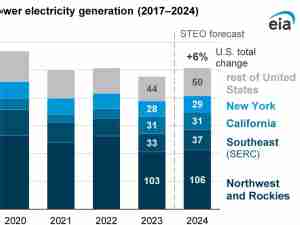OCTG prices for Japan rise on high raw material prices, while they drop in China due to lower demand. Scrap metal prices fall and the price gap between European and Chinese steel narrows with global steel production set to be close, but not match the 2020 peak.
Here is Rystad Energy’s weekly steel and API note from Alistair Ramsay and Marina Bozkurt:
OCTG prices for Japan rise on high raw material prices, while they drop in China due to lower demand. Scrap metal prices fall and the price gap between European and Chinese steel narrows with global steel production set to be close, but not match the 2020 peak.
OCTG
OCTG prices from Japan continue going up amid high costs for key raw materials including coking coal, iron ore, oil, and alloy.
Because Japan imports everything from iron ore to crude oil, a dramatic slide in the value of the Yen has also boosted production costs.
The market for coking coal, one of main input for steel production, is expected to remain tight and the price will unlikely fall given the limited opportunities to expand supply.
We believe that 13Cr OCTG pricing from Japan will stay on the rise driven by the limited supply.
Tenaris and Vallourec will shift their 13Cr production to other facilities, and we think that the transaction might take some time.
As a result, the supply-demand situation should remain tight, leading to a continuous upward trend in pricing.
Japanese OCTG manufacturers will likely push for more price hikes to cover the rising costs of the key raw materials as well as logistics and fuels.
Faced with surging energy costs, Japanese steelmakers are looking at ways to replace them by more cheap ones in order their profits are not squeezed.
Nippon Steel is considering making more investments in coal mines, despite ambitions to cut carbon emissions.
In contrast, OCTG prices from China have slumped, as the nation’s zero-Covid policy has sapped demand and taken a heavy toll on the economy.
OCTG prices have been following the billet price drops, although at a slower pace.
Some OCTG mills are trying to hold prices, but the price cut by other producers makes the downward pressure on the market.
There is still a possibility for further downturn in the short run.
However, OCTG demand and prices will likely turn to upswings within a couple of months supported by China’s measures to bolster the economy.
Marina Bozkurt, senior analyst
Energy Steel
As we indicated a week ago, international scrap prices have fallen back over the past week as the pressure from squeezed steelmakers started to tell.
Upside risks still remain for steel, notably in low-priced Chinese markets, but for now it is merely the case that prices in China are falling by less than prices in the international markets.
In the week ending July 15, the gap or differential between Chinese export and European domestic prices of hot-rolled coil (commercial quality) slipped under $200/t from a peak three months ago of $618/t but the gap is still large enough to encourage more Chinese steel overseas.
News in this week shows that Chinese steel production retreated last month as expected but the volume produced beat our expectations by staying above 90 million tons (90.73Mt).
We had forecast 89.95Mt; a decline of roughly 7% month-on-month but that was against the previous month’s provisional figure as reported first by China’s national bureau of statistics (NBS) of 96.61Mt.
However, the latest year-to-date total published with the June figures suggests output in May was upwardly revised to 97.75 showing June’s decline was in-line with the 7% cut we predicted.
On a year-on-year basis, steel production continued to decline last month, albeit at an ever-decreasing rate.
Bearing in mind that the severe production cuts were introduced in the second half of last year, after the government was determined to reduce c02 emissions and cut the impact of raw materials due to inflation, we anticipate that output this year is likely to be higher.
In fact, we would not be surprised if steel production will rise overall this year in spite of the declines during the first half.
After all, production typically peaks in the third quarter before falling through the “winter” months from November.
As iron ore stocks are reviving, steelmakers may well be preparing for a strong third quarter but with underlying demand still somewhat depressed, our view is that production will ease slightly in Q3 to 275.6Mt (down from 283.5Mt in Q2) and 261.7Mt in Q4, bringing the annual total to 1,064.3 Mt, close to but still below the 2020 peak.
Alistair Ramsay, vice president









